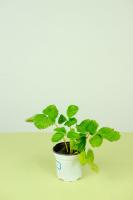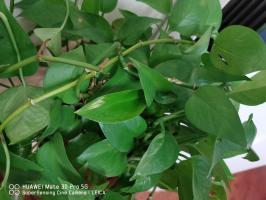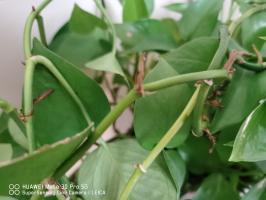Is a Tomato Plant Vascular or Nonvascular?
Tomatoes are one of the most popular fruits in the world, loved by many for their delicious taste and versatility in different types of dishes. But have you ever wondered if tomato plants are vascular or nonvascular? In this article, we'll explore the structure of tomato plants and whether they belong to the category of vascular or nonvascular plants.
The Structure of a Tomato Plant
A tomato plant is made up of different parts, including roots, stems, and leaves. The roots of a tomato plant are responsible for absorbing water and nutrients from the soil, while the stem of the plant supports the leaves and flowers and transports water and nutrients from the roots to these parts. The leaves of a tomato plant are where the process of photosynthesis takes place, converting light energy into chemical energy that is used by the plant for growth and development.
Vascular Plants vs. Nonvascular Plants
Vascular plants and nonvascular plants are two distinct categories of plants that are classified based on their internal structure and how they transport water and nutrients throughout their bodies. Vascular plants, also known as tracheophytes, have a well-developed system of tubes and vessels that transport water and nutrients throughout their body. In contrast, nonvascular plants, also known as bryophytes, lack these specialized tissues and rely on diffusion for the transport of water and nutrients.
Is a Tomato Plant Vascular or Nonvascular?
So, is a tomato plant vascular or nonvascular? The answer is that tomato plants are vascular plants. They have specialized tissues called xylem and phloem that transport water and nutrients throughout their bodies. Xylem tissue is responsible for transporting water and minerals from the roots to the rest of the plant, while phloem tissue is responsible for transporting sugars and other organic molecules from the leaves to other parts of the plant.
The Importance of Vascular Tissue in Tomato Plants
The presence of vascular tissue is essential for the growth and survival of tomato plants. Without these specialized tissues, the plant would not be able to absorb water and nutrients from the soil, nor would it be able to transport sugars and other organic molecules to different parts of its body. This would severely limit the growth and productivity of the plant, making it difficult to produce fruits and flowers.
In Conclusion
In summary, tomato plants are vascular plants, which means they have a well-developed system of tissues that transport water and nutrients throughout their bodies. This specialized system is essential for the growth and productivity of the plant, allowing it to absorb nutrients from the soil and transport sugars and other organic molecules to different parts of its body. So next time you enjoy a delicious tomato, you can appreciate the complex internal structure of the plant that allowed it to grow and thrive.

 how many times do yo...
how many times do yo... how many planted tre...
how many planted tre... how many pine trees ...
how many pine trees ... how many pecan trees...
how many pecan trees... how many plants comp...
how many plants comp... how many plants can ...
how many plants can ... how many plants and ...
how many plants and ... how many pepper plan...
how many pepper plan...






























